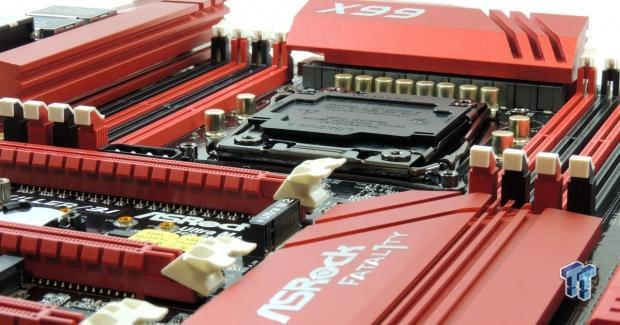
The Bottom Line
Introduction, Specifications, and Pricing
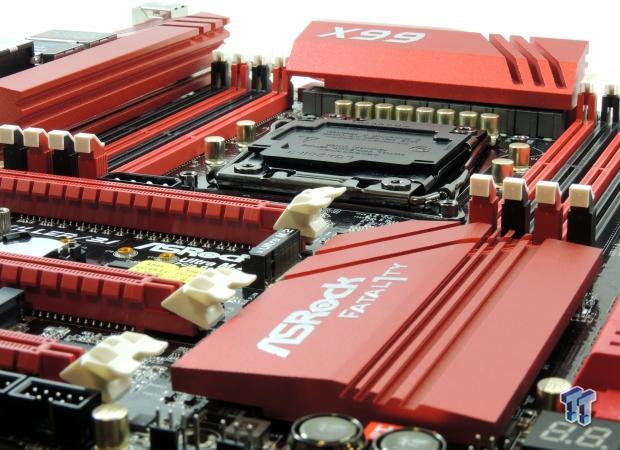
ASRock is a company focused on bringing performance motherboards to the market, and with the Intel X99 chipset, they have done just that. I previously reviewed many of ASRock's X99 offerings and today I take a look at one of their "second" generation X99 motherboards with some more refined features.
The Fatal1ty X99X Killer/3.1 carries a really long feature list, including Ultra M.2, Purity Sound 2, XOC socket, and of course USB 3.1 as the model name suggests. This board looks to appease builders who want a gaming centric board with a lot of USB 3.1 connectivity. Follow me as I venture into the world of the Fatal1ty X99X Killer/3.1.
Specifications

There are some features that really stick out with ASRock's Fatal1ty X99X Killer/3.1; 128GB DDR4 memory support with ECC and 12K Nichicon capacitors are two that top the list in terms of uniqueness. Most other X99 motherboards only support 64GB of memory, but ASRock has taken the server approach with their entire X99 lineup, which means that Xeons are fully supported as are the technologies that come with them. While this isn't a server board, many of the features are aimed at workstations, such as the USB DOM connector which is used for very expensive software programs that require a USB drive for authentication.
Pricing
NOT YET AVAILABLE. We will update you ASAP.
Packaging and the Fatal1ty X99X Killer/3.1
Packaging and the Board
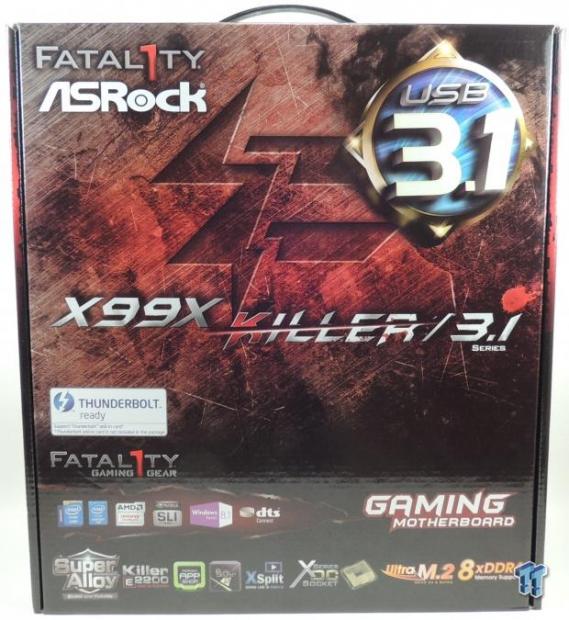
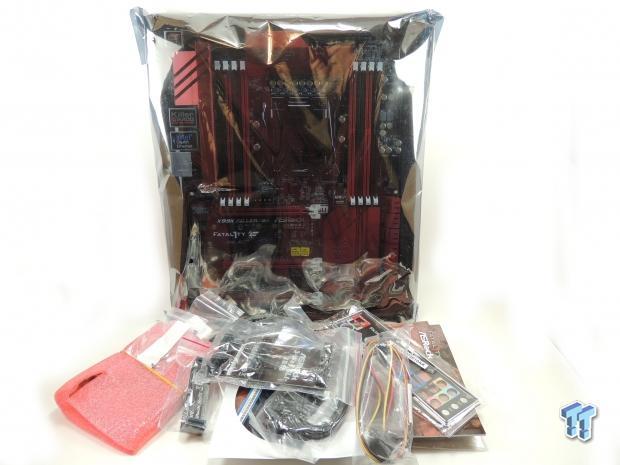
The box advertises the extreme memory support and the other noteworthy features such as dual LAN and the included USB 3.1 card and built in USB 3.1. The packaging is well done, the board is zip tied into a foam container and there is an antistatic bag covering the board.
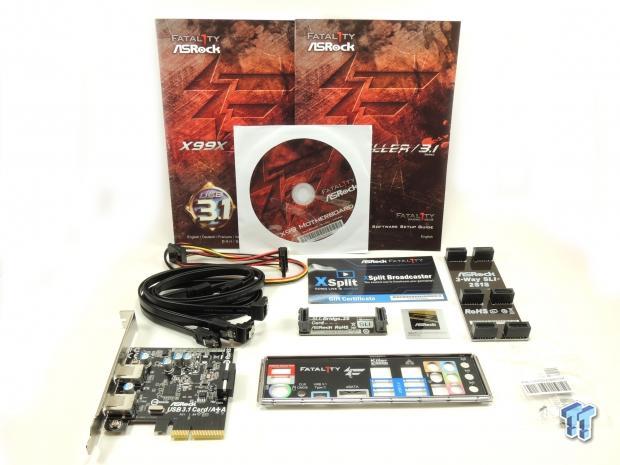
Accessories are plenty; 4x SATA6G cables, 2-Way SLI bridge, 3-Way SLI Bridge, USB 3.1 card (A+A), IO Shield, SATA Saver power connectors, screw for M.2, manuals, case badge, and driver DVD. There is also a card for a free trial of XSplit game streaming.
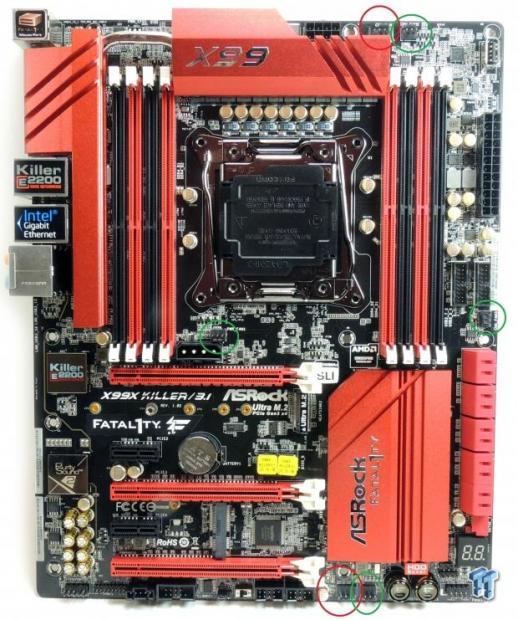
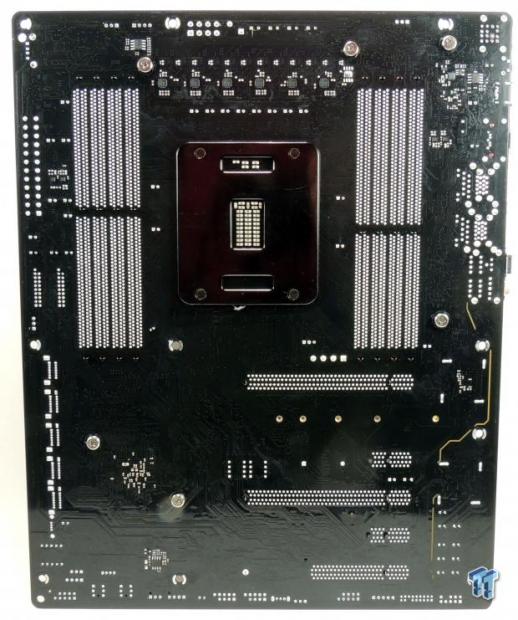
I have circled the fan headers on the board, there are a total of six headers, two circled in red are 4-pin PWM headers, and four circled in green are 3-pin voltage mode headers. The red heat sinks are vibrant and would really go well with a red themed build. Like the Fatal1ty X99 Professional I reviewed before, the Fatal1ty X99X Killer has more of a crimson color than a typical red, which looks nicer in my opinion. The back of the board is pretty bare, which is a good thing.
You can see the PCB isolation for the audio, the doublers/dual drivers for the CPU VRM, and the low profile socket backing. Since this board is aimed at servers there are no holes for the CPU socket coolers, make sure not to over-tighten or you can screw into the PCB itself. The pins for the memory DIMMs that you can see on the back are very low profile; this reduces electrical noise and helps with clearance levels for certain chassis.
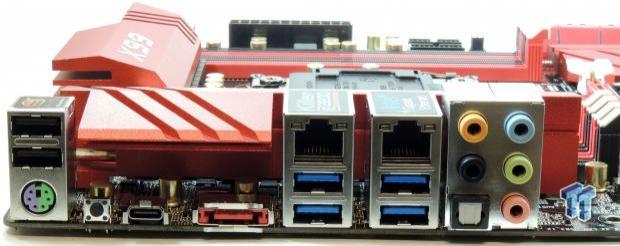
The back panel IO features a 2x1GBit NIC, 4x USB 3.0 ports, 1x C-Type USB 3.1 port, 2x USB 2.0 ports, PS/2 keyboard and mouse, a 7.1 TOSLINK for audio with S/PDIF out, 1x eSATA6G, and a ClearCMOS button.
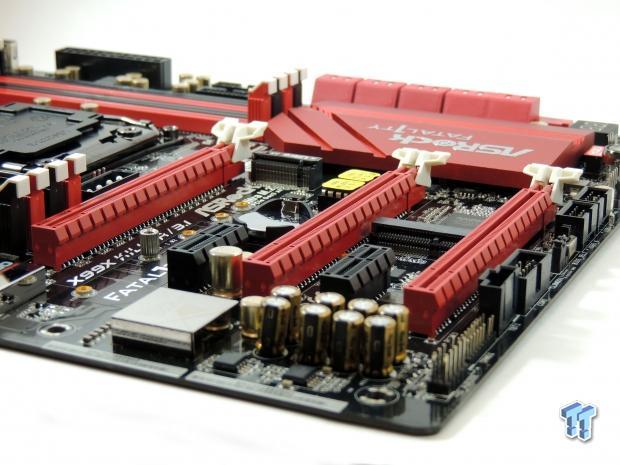
The PCI-E layout on this motherboard is optimized for performance, while it supports 3-way SLI and CrossFireX, you will lose the last 16x slot if you use the Ultra M.2 slot. The PCI-E layout is electrically wired at 16x/16x/8x in the three full sized 16x slots.
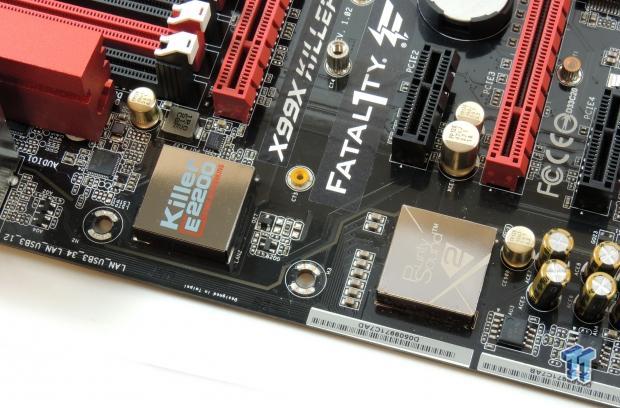
Purity Sound 2 is ASRock's upgraded ALC1150 implementation with high quality Nichicon electrolytic audio capacitors, dual amplifiers, and PCB isolation. ASRock's Killer e2200 implementation comes with an EMI shield for the NIC.
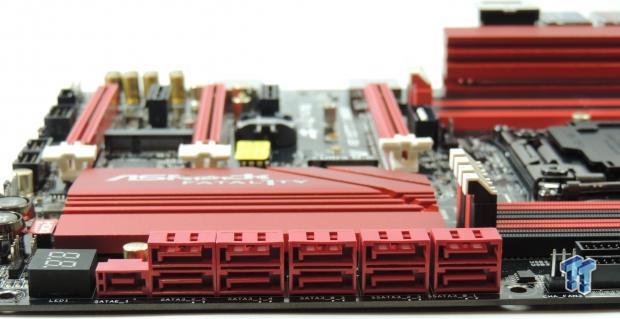
There are 10 SATA6G ports from the PCH. SSATA3_3 shares its bandwidth with the eSATA port on the backpanel and SSATA3_2 shares its bandwidth with the Ultra M.2 slot so it can run SATA based M.2 drives.
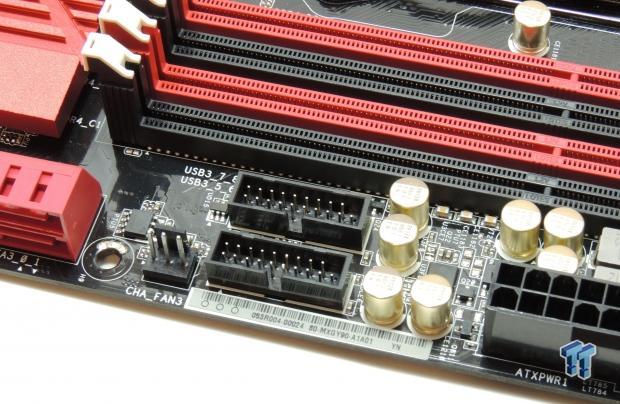
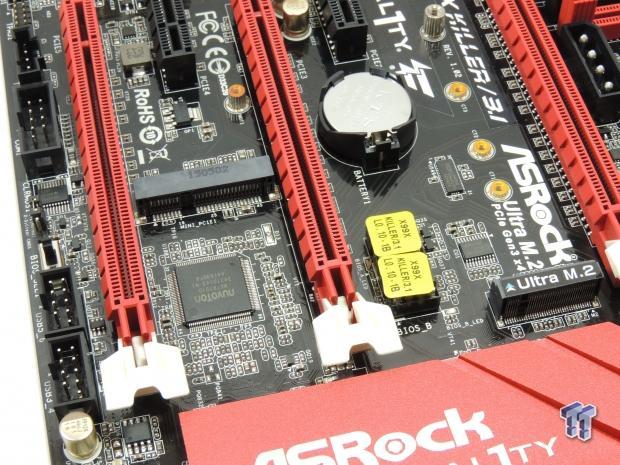
Two USB 3.0 front panel headers are located north of the PCH which is great for cable management. There is also an Ultra M.2 slot which gets its bandwidth from the last PCI-E 16x slot, so if you use the Ultra M.2 it will disable PCI-E slot 5. Two BIOS ROMs with a selector which are also located on the board as is a mini PCI-E slot.
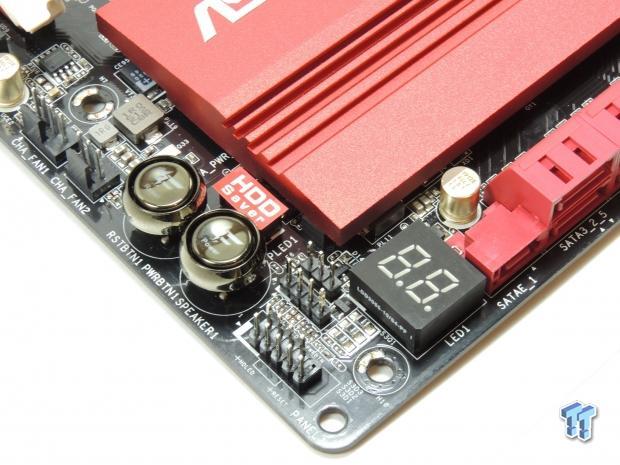
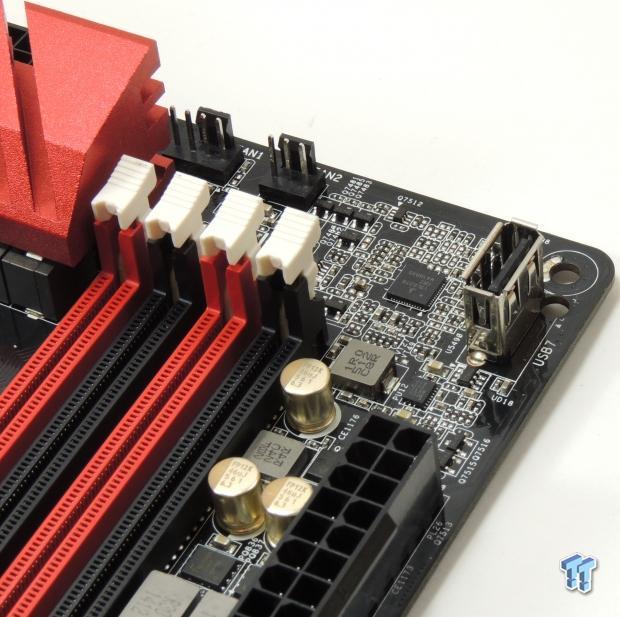
It is nice to see basic OC features like power and reset buttons and a POST code display, that POST code display is something I really like to see. The HDD saver allows you to power two SATA based drives through the board, allowing software to disable power to them if needed. The image on the right shows the USB DOM connector which can take an authentication key for high-end workstation software.
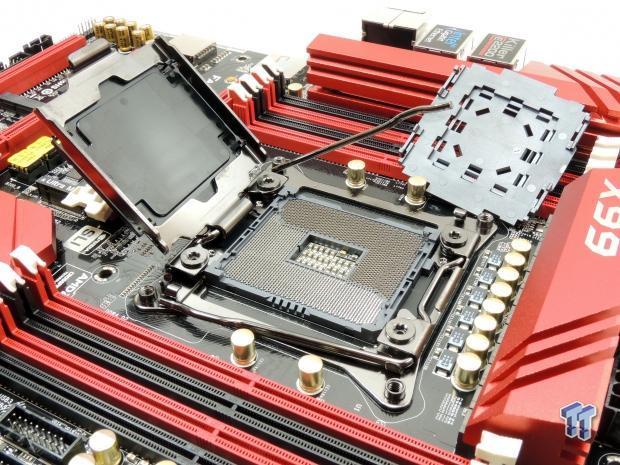
ASRock has the socket with the extra pins. They refer to it as X Series OC Socket as it allows for higher cache frequency overclocking and lower required IMC voltages for higher DRAM clocks.
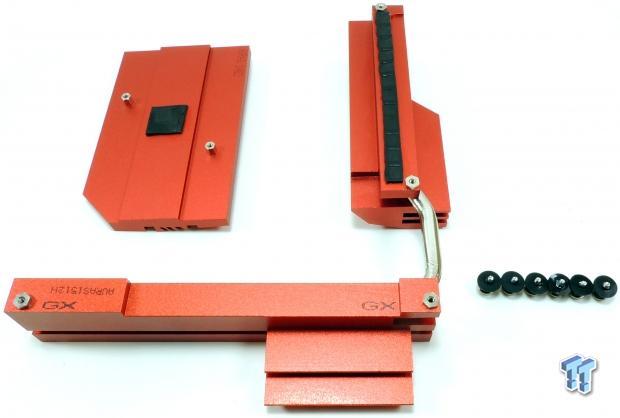
These are the heat sinks, all of them use screws and contact looks great on the VRM and PCH.
Fatal1ty X99X Killer/3.1 Circuit Analysis
Circuit Analysis
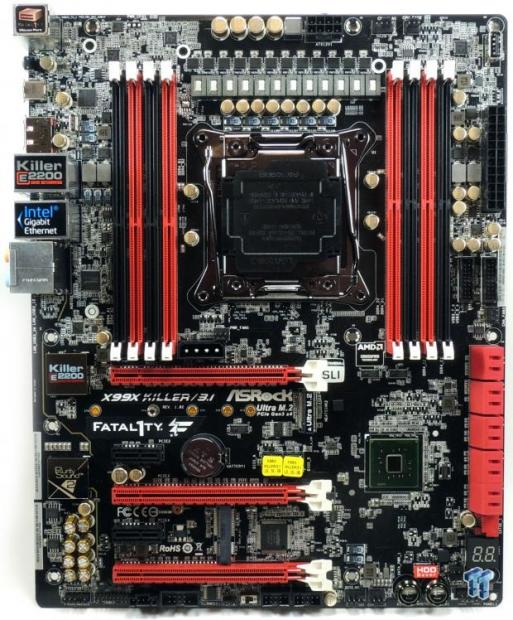
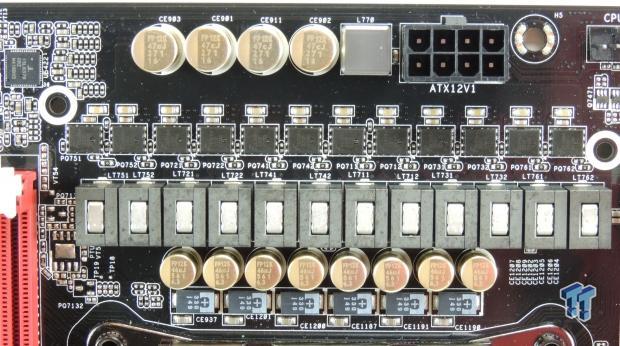
The VRM on this board consists of 12 phases. ASRock has focused on power density by utilizing lower profile 60A inductors and more integrated phases. The output filter is a mix of three different types of capacitors; 8x 560uF solid 12K Nichicon capacitors at 4480uF, 6x 330uF tantalum POSCAPs at 1980uF, and some ceramics. This is roughly 6460uF total and more than enough for strong performance.
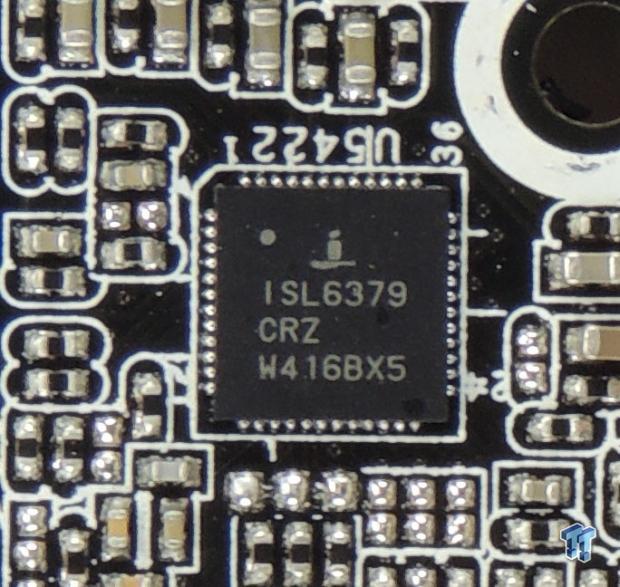
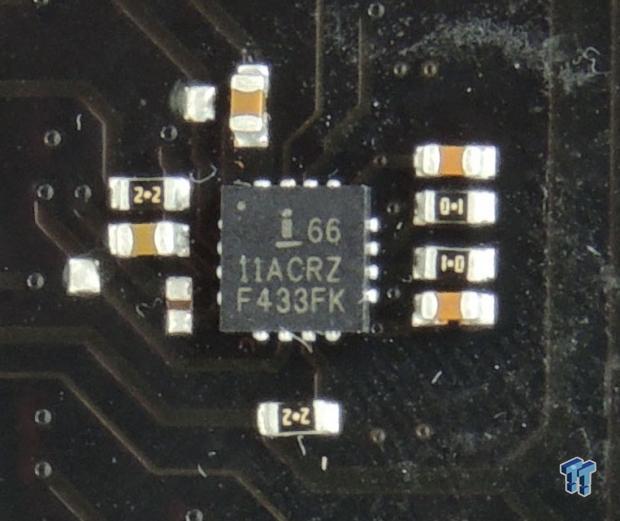
The PWM controller is an Intersil ISL6379 Digitally Controlled Hybrid 6 phase PWM. There is no datasheet, but I would venture to guess that it is a 6+1 phase PWM. To get 12 phases manufacturers must double the phase count from the PWM since there is no 12 phase PWM in production for motherboards. ASRock uses 6x Intersil ISL6611A which are phase doublers with integrated dual drivers. This saves a lot of space which is important considering the limited motherboard real-estate of the X99 platform.
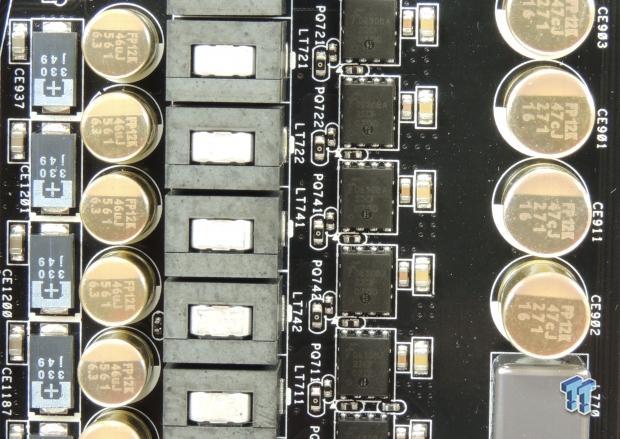
ASRock is using 12x FDMS3668S which are dual N-Channel MOSFETs from Fairchild Semiconductor in the PowerTrench package. They have very good thermal and current ratings at 13A/18A (high/low side) at only 2.5W which is excellent.
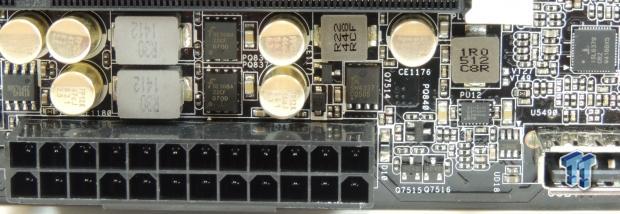
Each memory VRM is like a two phase version of the CPU VRM, using the same ISL6379 PWM and the same dual N-Channel PowerTrench MOSFETs for a total of three ISL6379 and 16 dual MOSFETs on the board. An MPS MPQ8632 is used for the VPP power for each set of the 4 DIMMs.
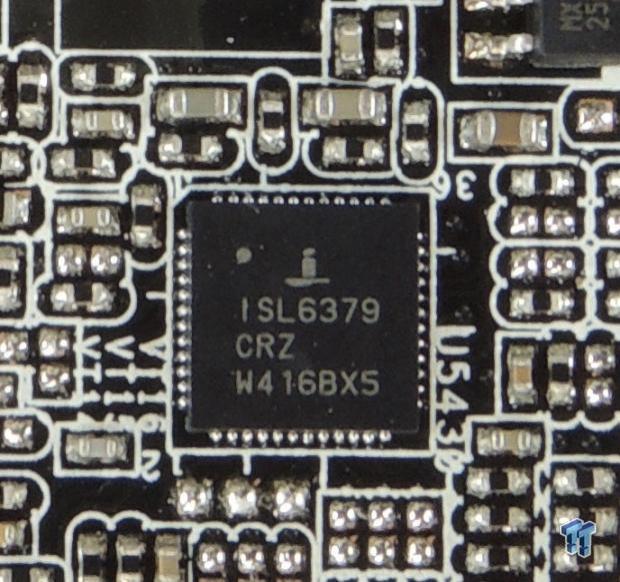
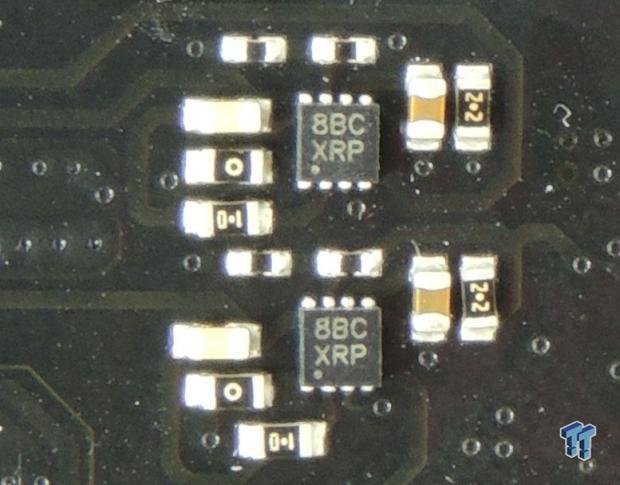
It's pretty amazing that ASRock is using the ISL6379 three times on the board, it is overkill, but should provide very nice voltage control. The memory DIMM's main MOSFETs need drivers and four tiny ones are found on the back of the board. The drivers are Intersil ISL6208.
Fatal1ty X99X Killer/3.1 Circuit Analysis Continued
Circuit Analysis Continued
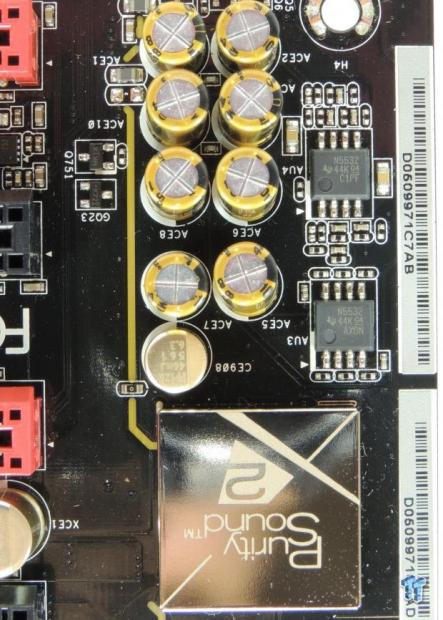
The audio is powered by an ALC1150 which compliments the Intel Azalia processor in the PCH and two Texas Instruments NE5532 are used to amplify the backpanel and front panel audio outputs. Eight Nichicon gold 100uF electrolytic audio capacitors are used for the analog domain and the audio circuitry is isolated to reduce noise.
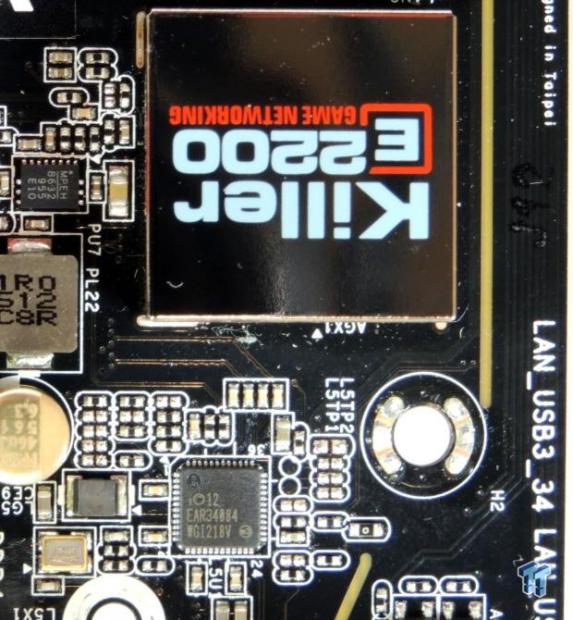
The Fatal1ty X99X Killer has two wired NICs, one utilizes Intel's i218v and the other is a Qualcomm Killer e2200.
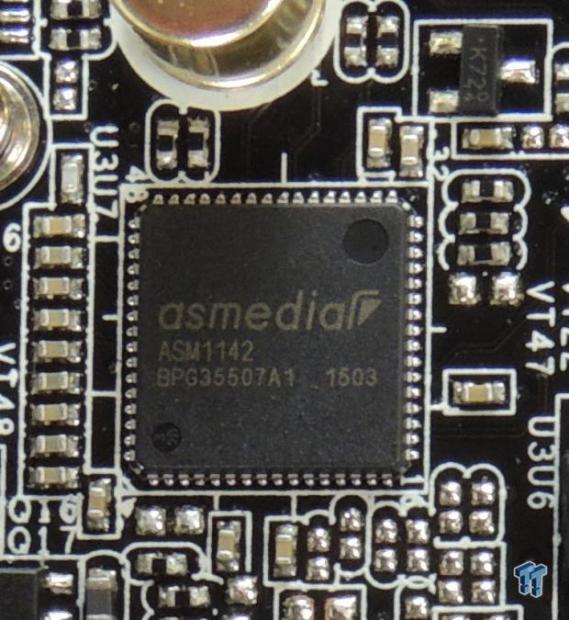
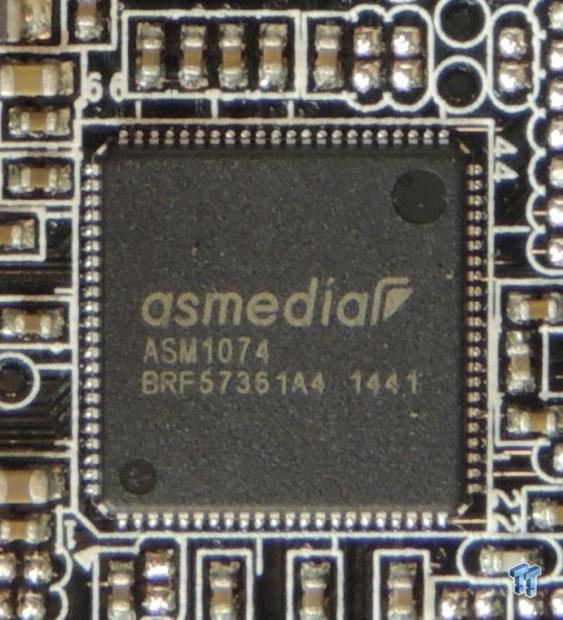
An ASMedia ASM1142 provides a single USB 3.1 type-C (reversible) port from two PCI-E lanes for the, and an ASMedia ASM1074 is a USB 3.0 hub controller which takes one USB 3.0 port and expands it into the four USB 3.0 ports on the back panel. The internal USB 3.0 headers are directly connected to the Intel PCH.
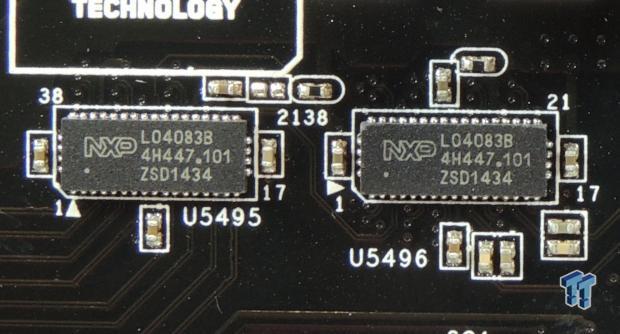
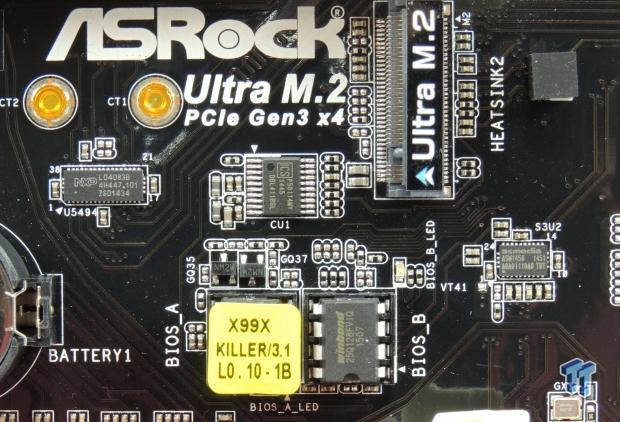
The Ultra M.2 slot will take its bandwidth from the last 16x slot through two NXP L04083B quick switches which are wired to the CPU's PCI-E 3.0 controller. It can provide up to 32Gb/s bandwidth, however, for SATA based M.2 drives the Ultra M.2 port needs an SATA link to the PCH which is provided through SSATA3_2 and an NXP L04083B. An ASMedia 1456 switches bandwidth from the SSATA3_3 port to the eSATA port on the back panel. This switching is all sound and performance won't take a hit as ports are just being traded and not shared.
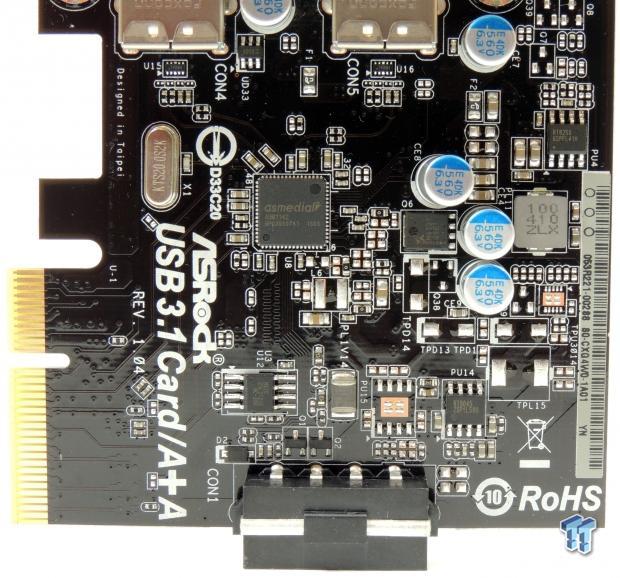
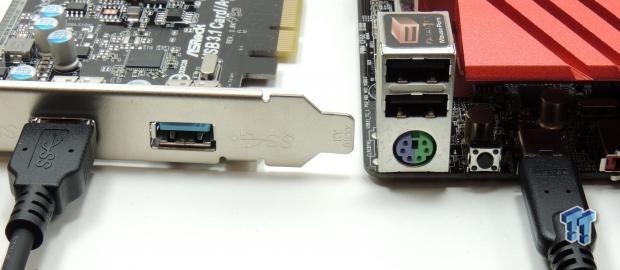
To expand the USB 3.1 capabilities of the Fatal1ty X99X Killer/3.1 even more, ASRock provides a 2x A-Type USB 3.1 card. The A -Type USB 3.1 connector is backward compatible with USB 3.0, 2.0, and 1.0. This card won't fit in a PCI-E 1x slot and needs a full sized or half sized slot. It uses an ASMedia ASM1142 and a Molex connector to provide the power that is required by USB 3.1. In total the board has three USB 3.1 connectors.
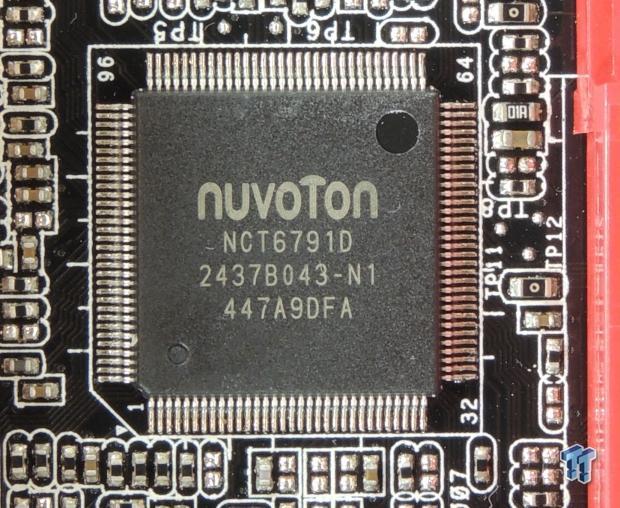
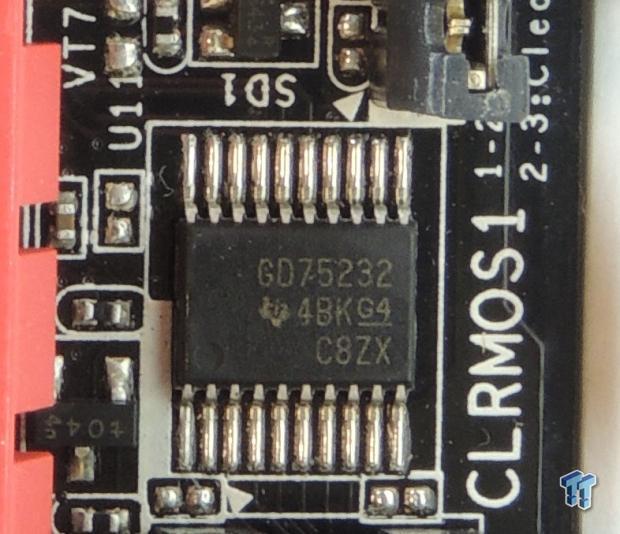
A nuvoTon NCT6791D provides SuperIO functionality and the PS/2 port on the backpanel. A Texas Instruments GD75232 provides drivers and receivers for the COM port.
BIOS and Software
BIOS
ASRock's UEFI it's quite extensive and provides a large variety of options for tweaking. If you are a novice overclocker, there are profiles in the UEFI for 4GHz with XMP and other higher speed overclocks (up to 4.5GHz). Since the release of the Intel X99 chipset, ASRock has made improvements to allow the use of turbo multipliers without EIST enabled, as EIST can hurt storage performance.
A trick that another editor at TweakTown taught me is to go into the storage configuration and set each drive to SSD mode if it's an SSD, because by default the ports are set to HDD mode for compatibility. Changing the drive mode to SSD will improve SSD performance.
I found by manual measurement that LLC level 3 gives the least deviation from the set voltage. The X Series OC Socket has its own extra voltage which is under voltage control menu labeled CPU IO Voltage; I leave it on auto as the board does increase this.
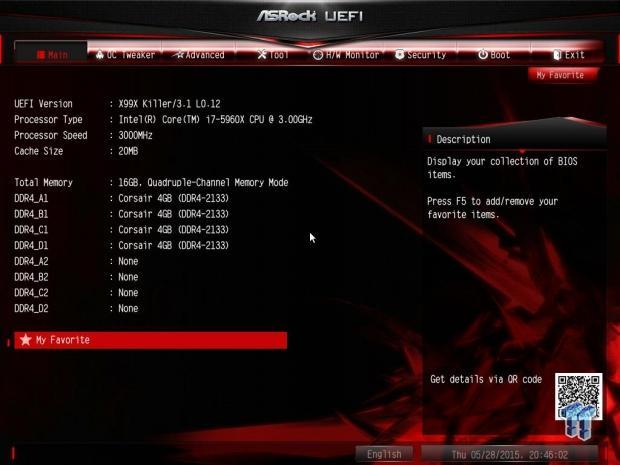
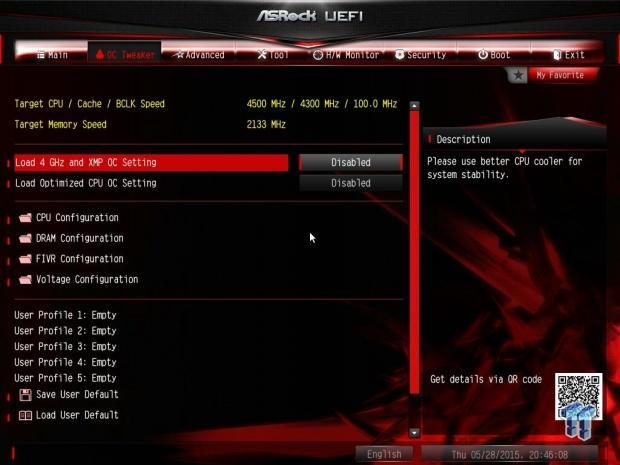
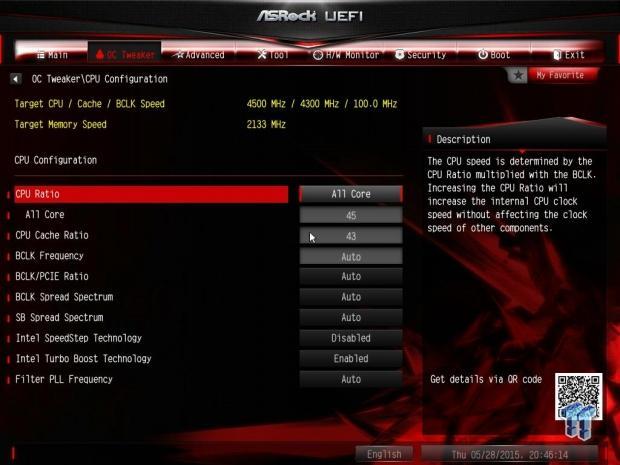
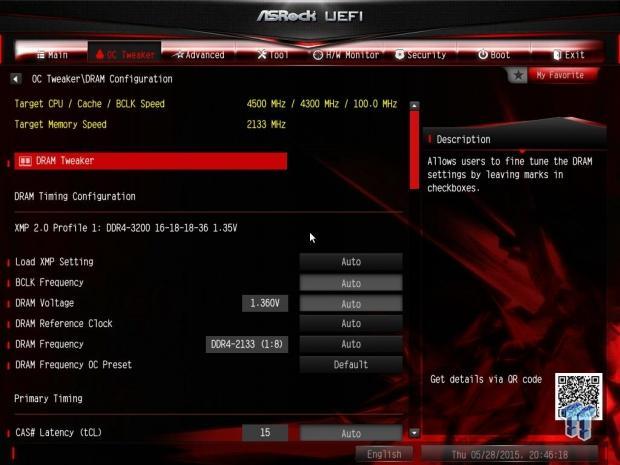
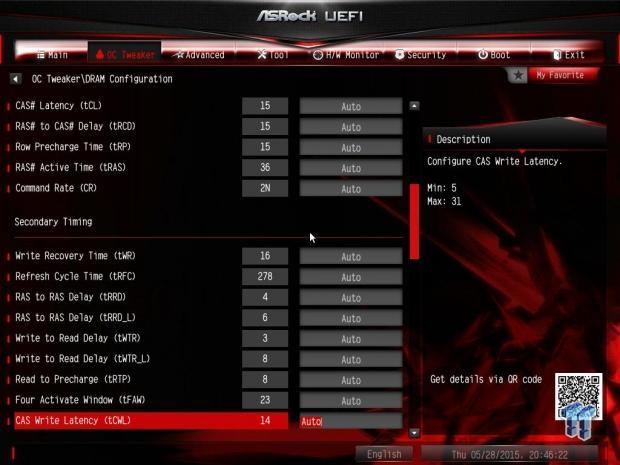

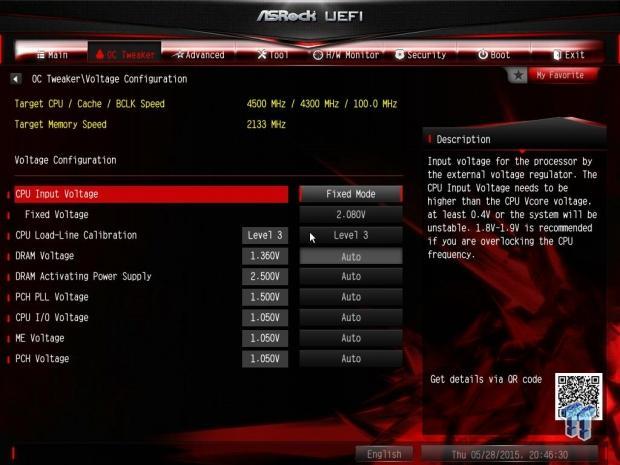
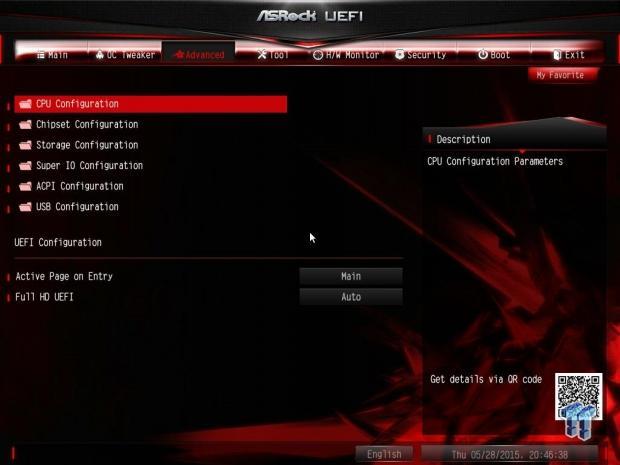
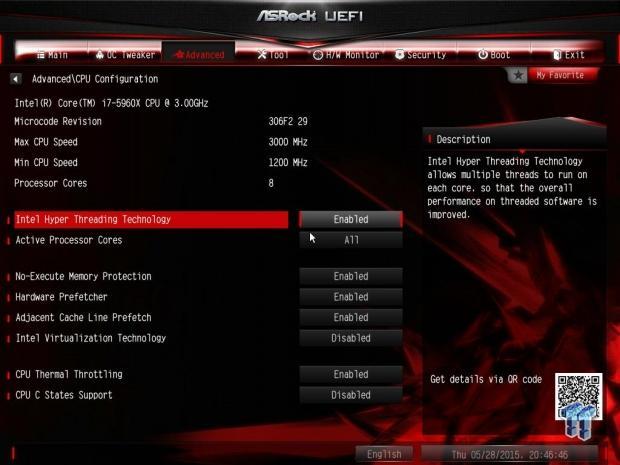
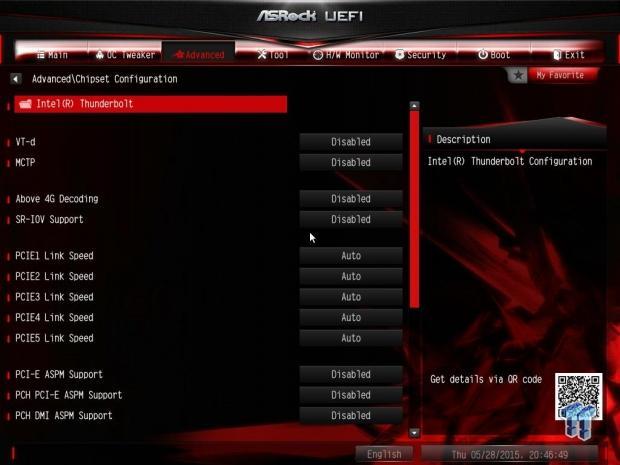
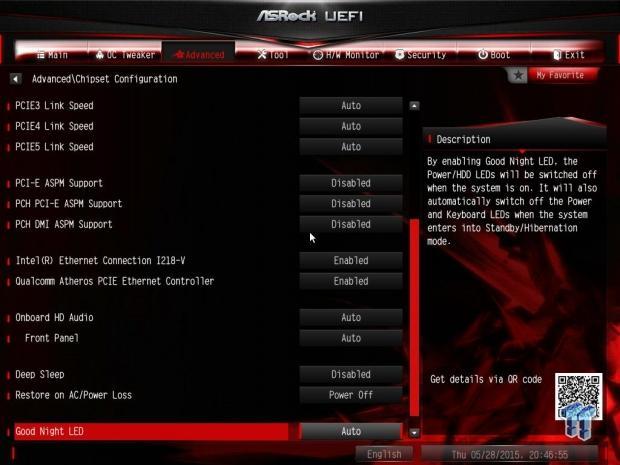
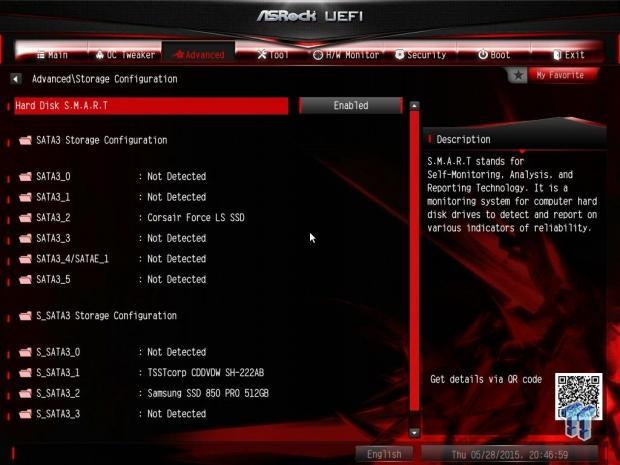
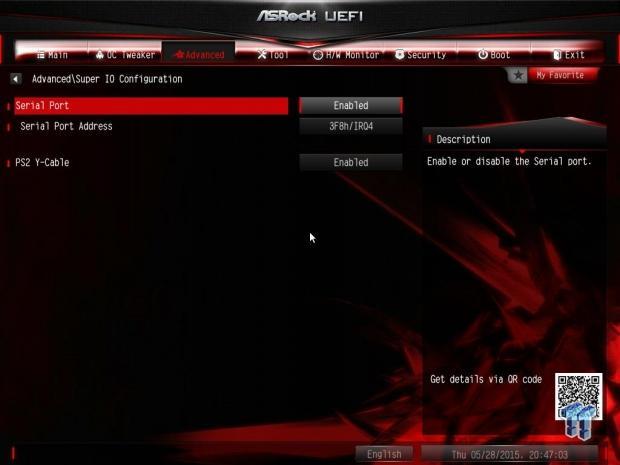
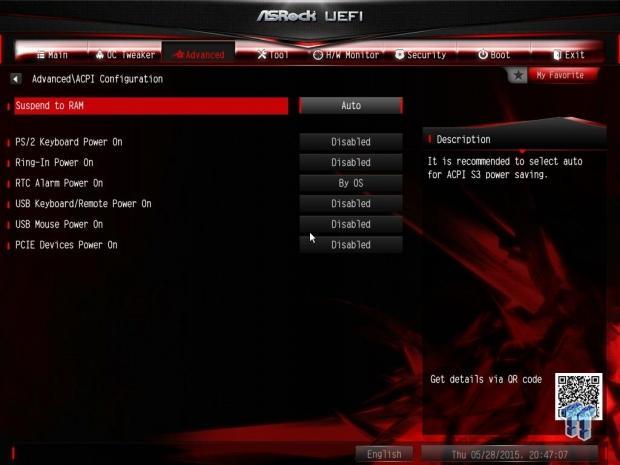
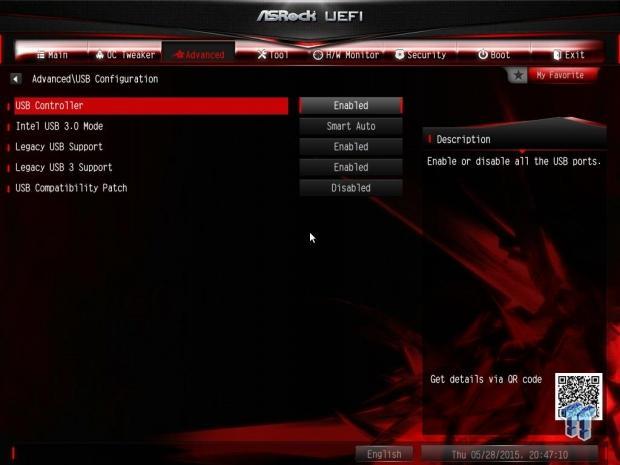
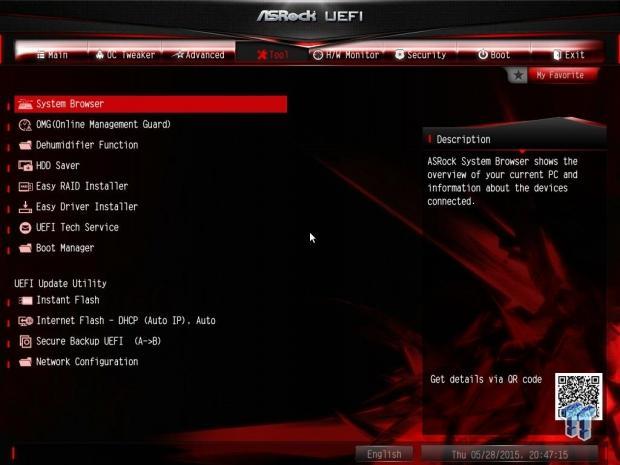
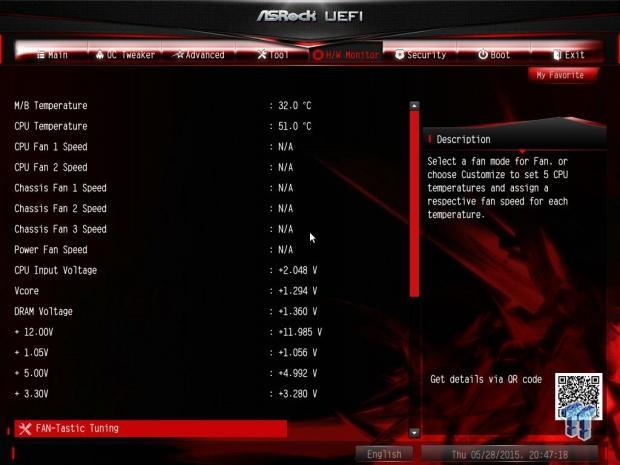

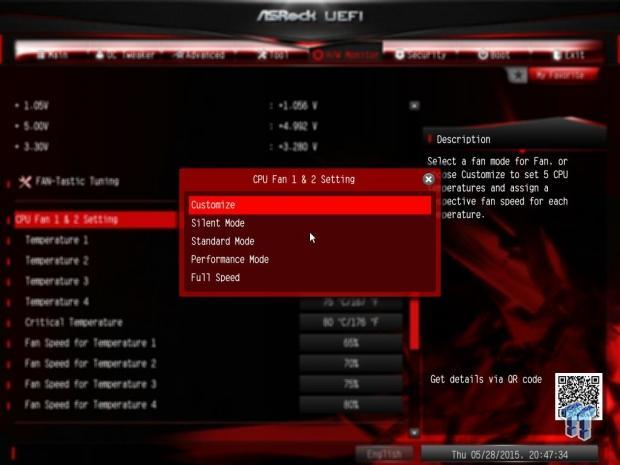
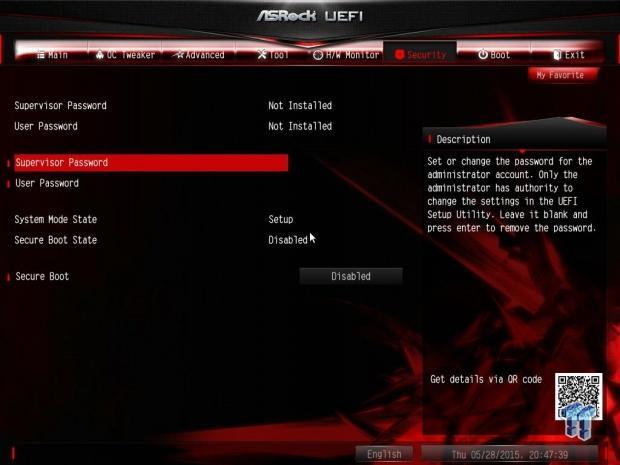
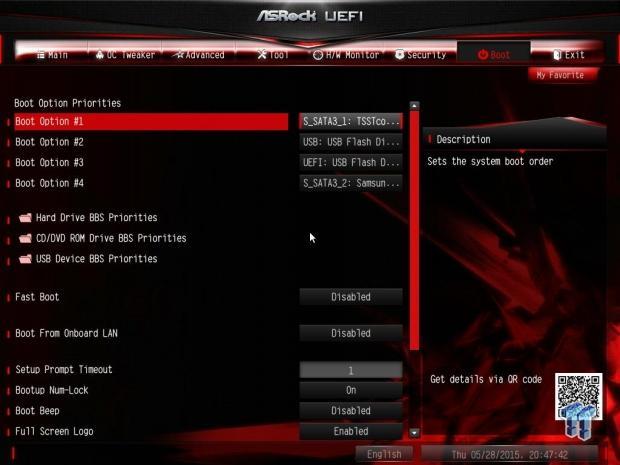
Software
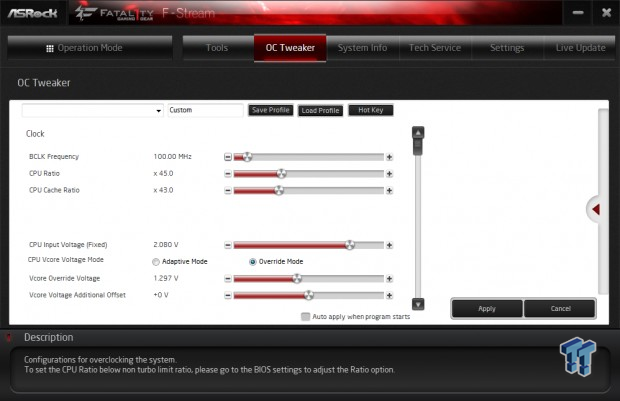

ASRock has consolidated a lot of its software into F-Tuning, which will let you set up functions like Good Night LED and Dehumidifier while allowing you to overclock the CPU in real-time.
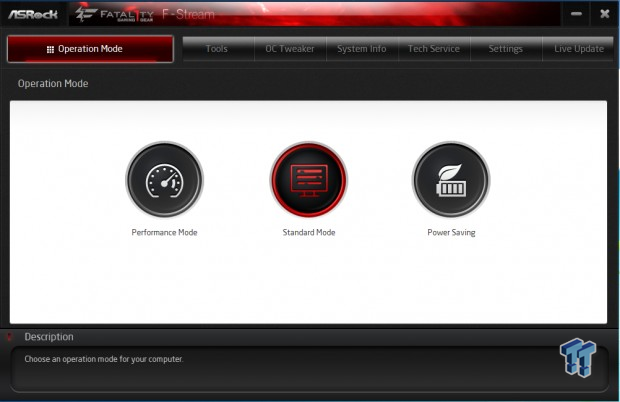
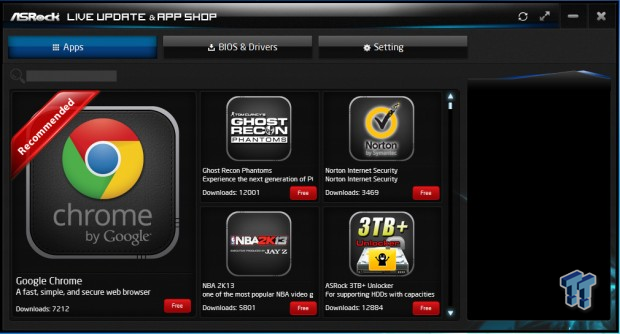
You can also choose operation modes such as performance or power saving. ASRock also has an APP store where you can update drivers and software.
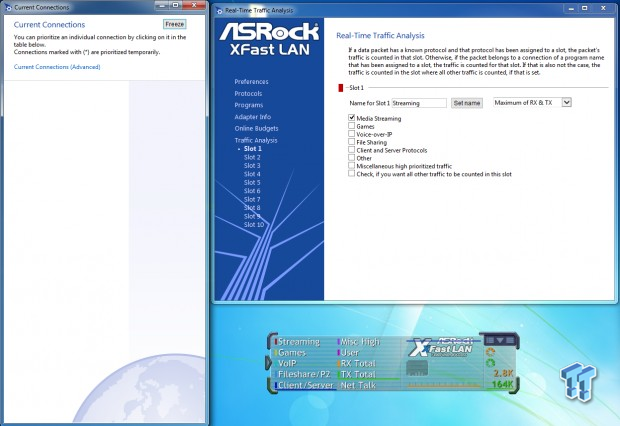
Here is ASRock's XFast LAN, which is similar to CFOS, for the Intel port. ASRock's Home Cloud is also provided for the Atheros NIC.
Test System Setup
Test Setup
An ultra- big thank you to Corsair for sponsoring the CPU watercooling, DDR4 memory, case, fans, SSD, USB drive, and PSU! A big thanks to Seek for sponsoring the Thermal Camera. You can find my review of the camera here.
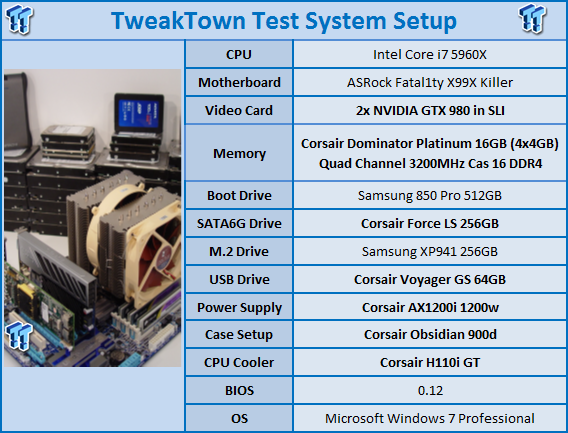
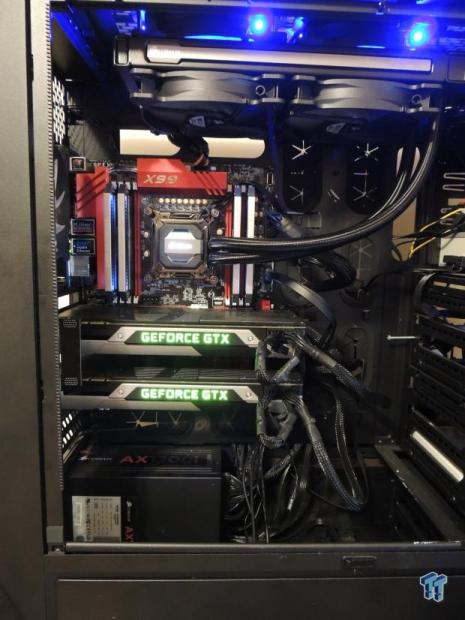
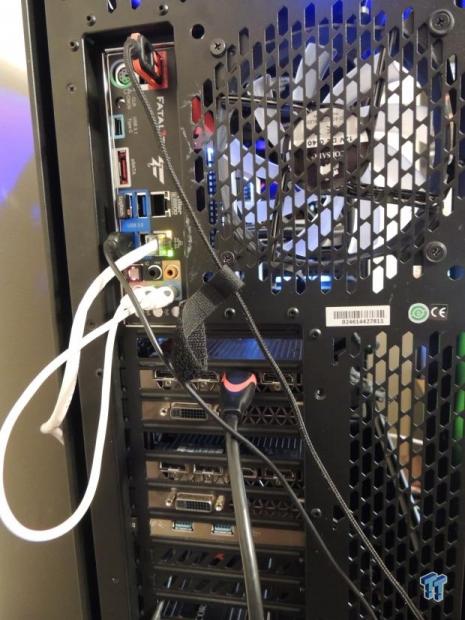
This is the new test bench, and it is designed to test every aspect of the motherboard and IO. I have designed it so that the motherboard sits in a case and is cooled by fans always on at a constant rate to keep the conditions similar for all tests. I have cut out part of the case behind the motherboard so I can get thermal images of the back of the PCB where the VRM heat spreads. System and CPU power measurements are now digitally logged.
I am also using a Netgear Nighthawk X4 AC2350 for our network (including wireless AC) tests. The latest M.2, SSD, and USB technologies are also being utilized to test the maximum potential of the motherboards that are being tested.
Overclocking
Overclocking Results
In this section, I will go through overclocking this board.
CPU Overclocking
Max CPU Overclock is found by setting the VCore to 1.5v, Input voltage to 2.1v, cache voltage to 1.15v, booting with a CPU multiplier of 45x and disabling any features that would result in CPU frequency fluctuation. I then proceed into Windows and use software to increase the multiplier.
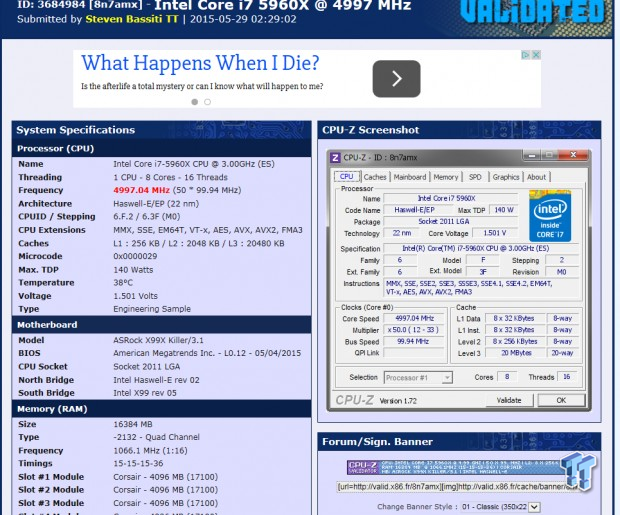
5.0GHz is the maximum of our CPU on this board and other X99 motherboards. It is clear that CPU overclocking is pretty good for high frequency. Maximum AIDA64 Stable Overclock (BIOS settings below for this):
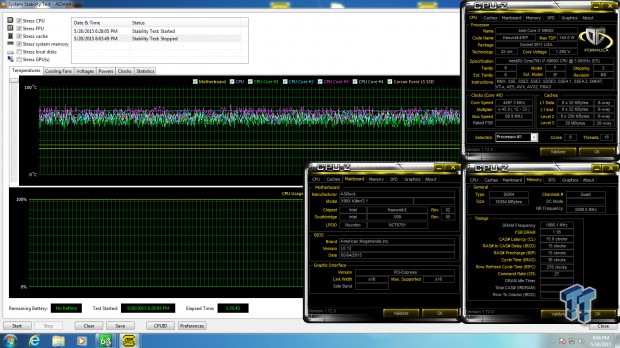
I was easily able to pull off 4.5GHz on the CPU with 3.3GHz cache overclock on my memory manually tuning the UEFI.
Uncore/Cache Overclocking
Boards with the extra pins in the socket can overclock the cache further, on this board I was able to OC the cache to 4.5GHz, while the core was 4.5GHz.
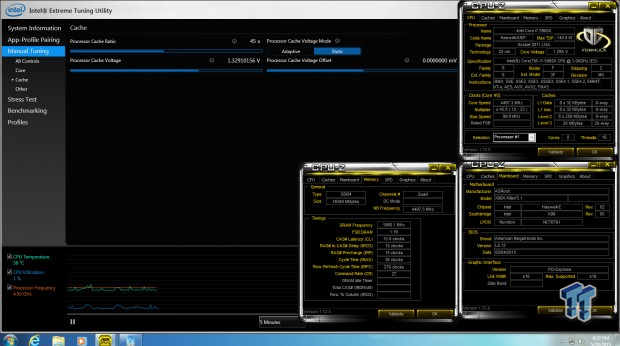
CPU, Memory, and System Benchmarks
CINEBENCH 11.5
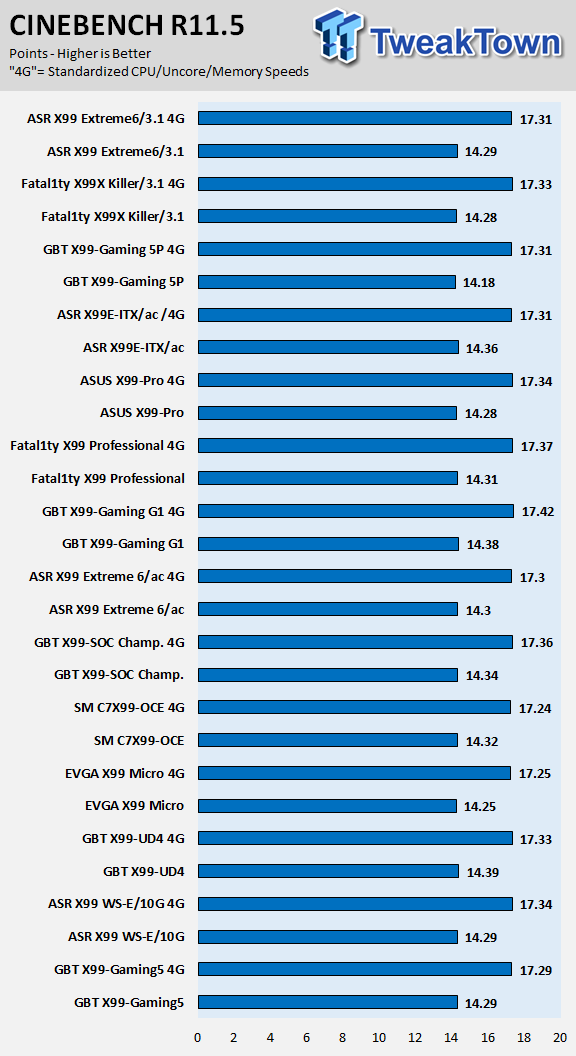
wPrime
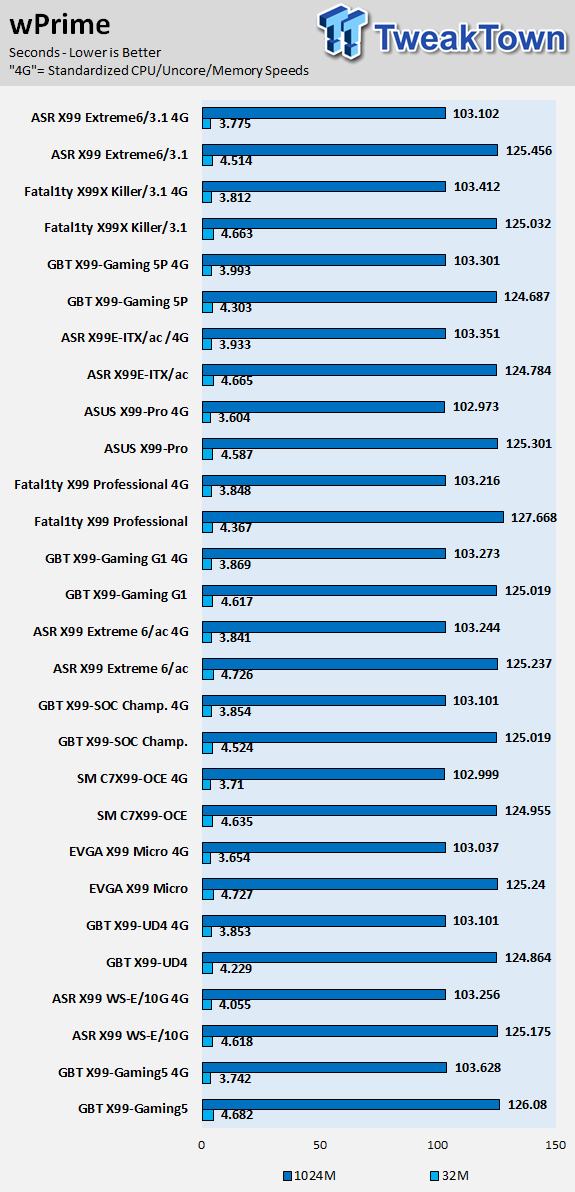
AIDA64 AES and HASH
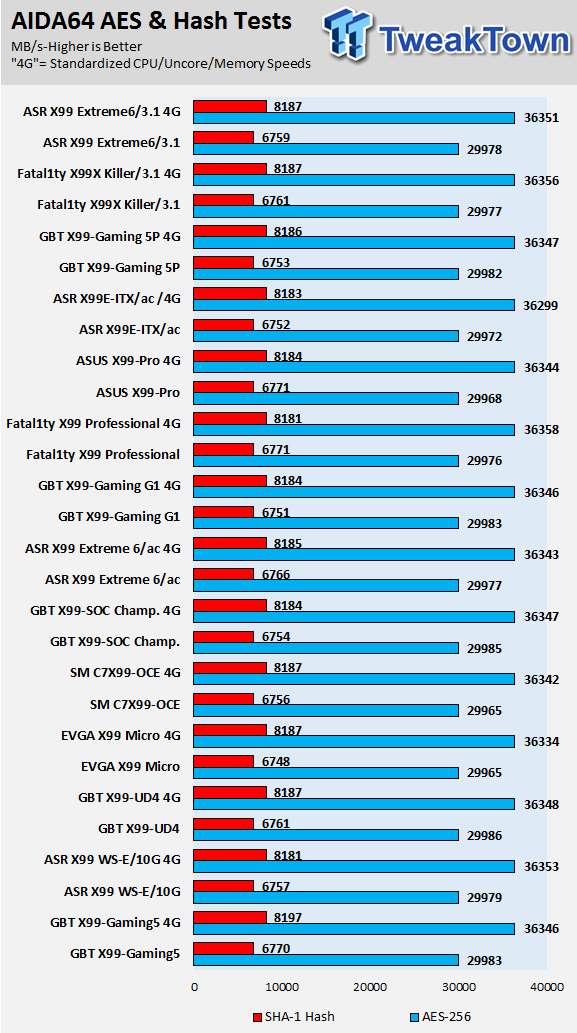
AIDA64 FPU
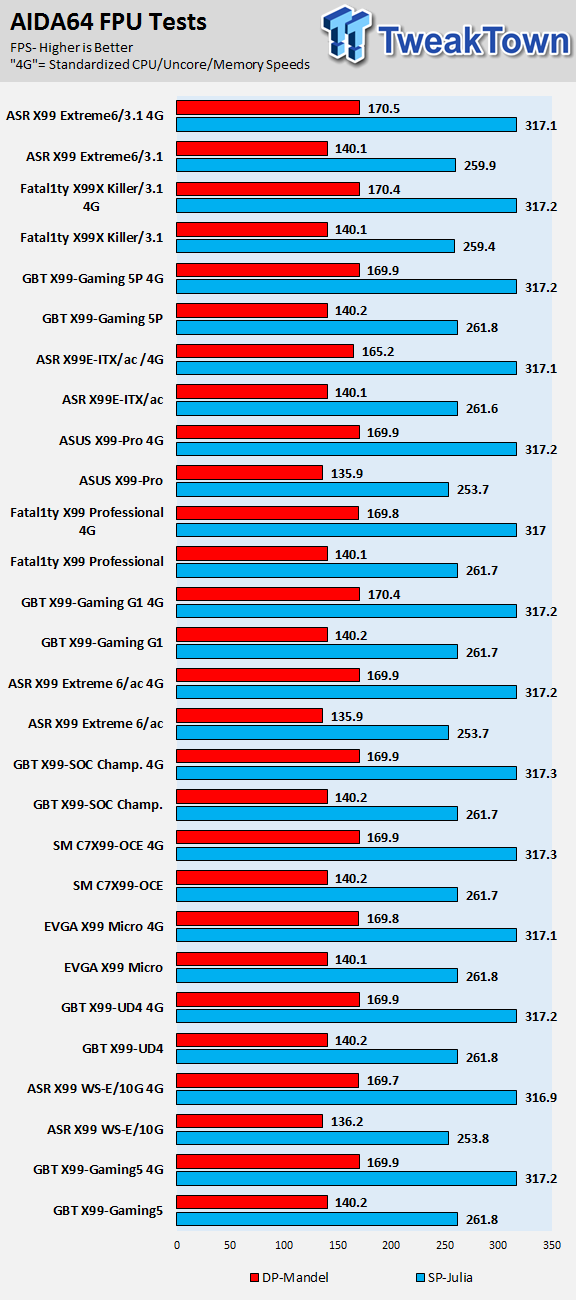
AIDA64 Memory

PCMark8 Home Test
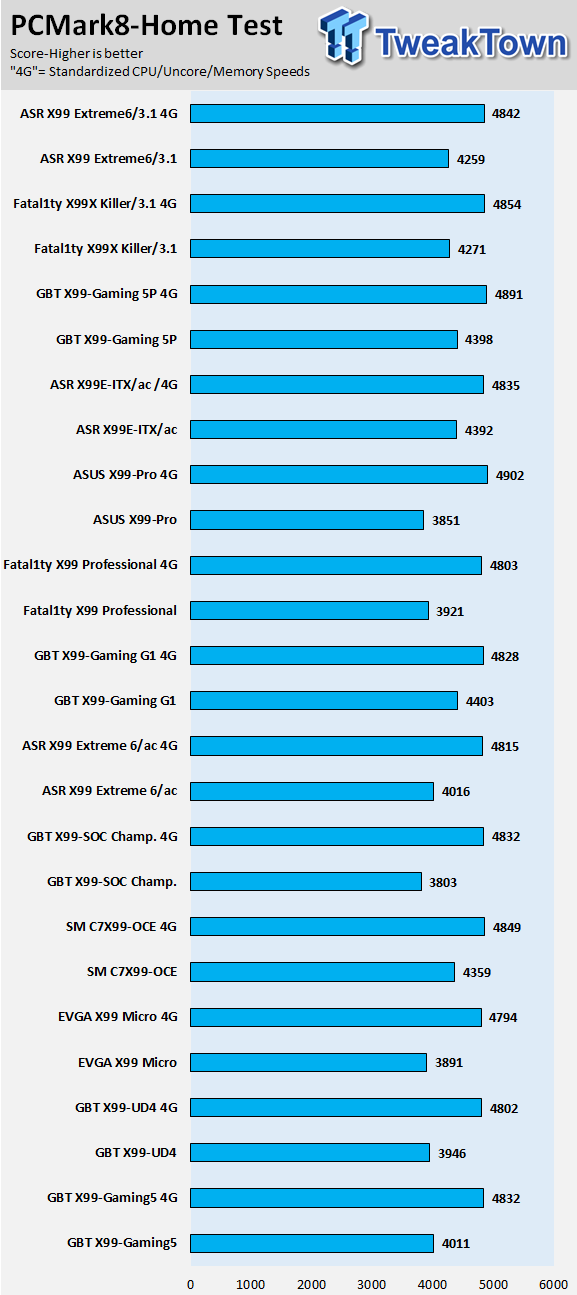
3DMark: Cloud Gate
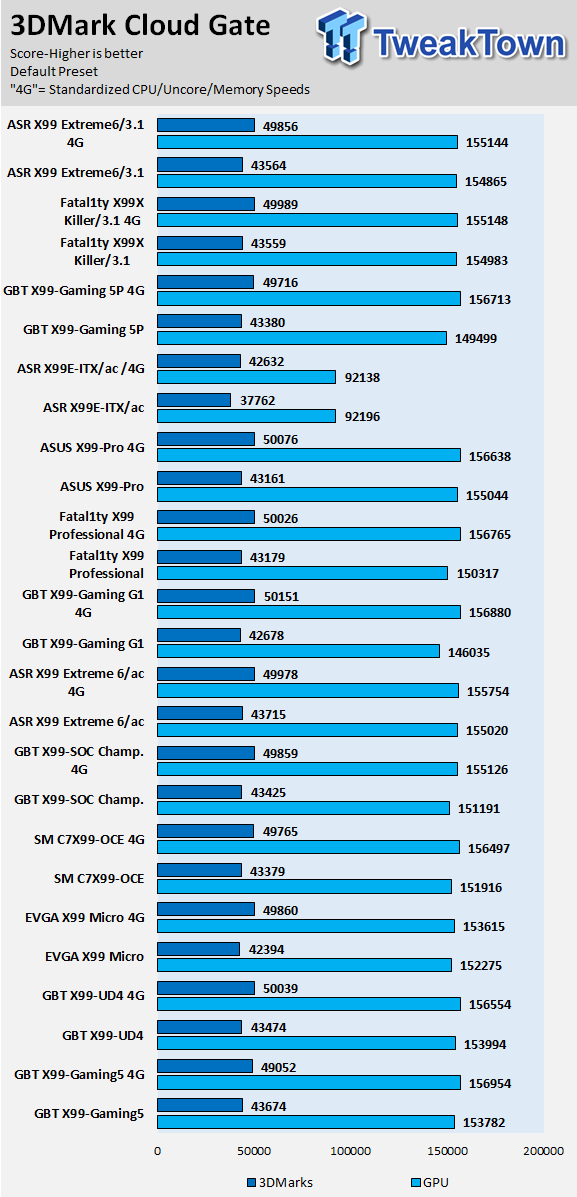
3DMark: Fire Strike
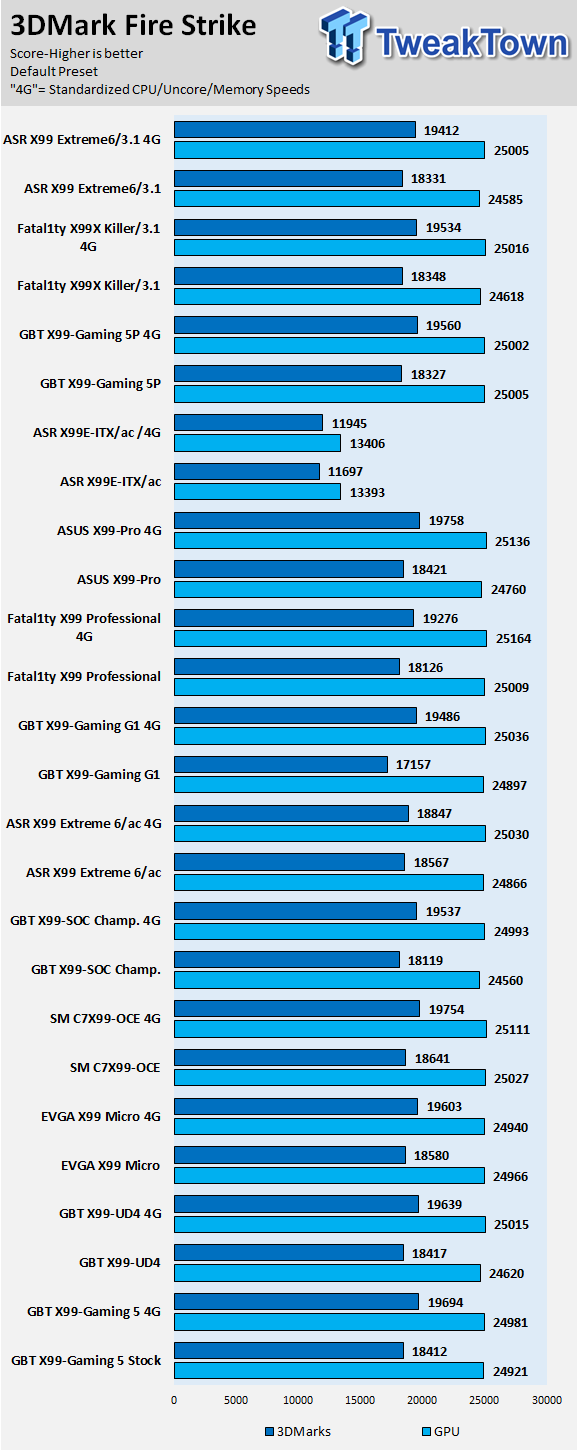
Resident Evil 6
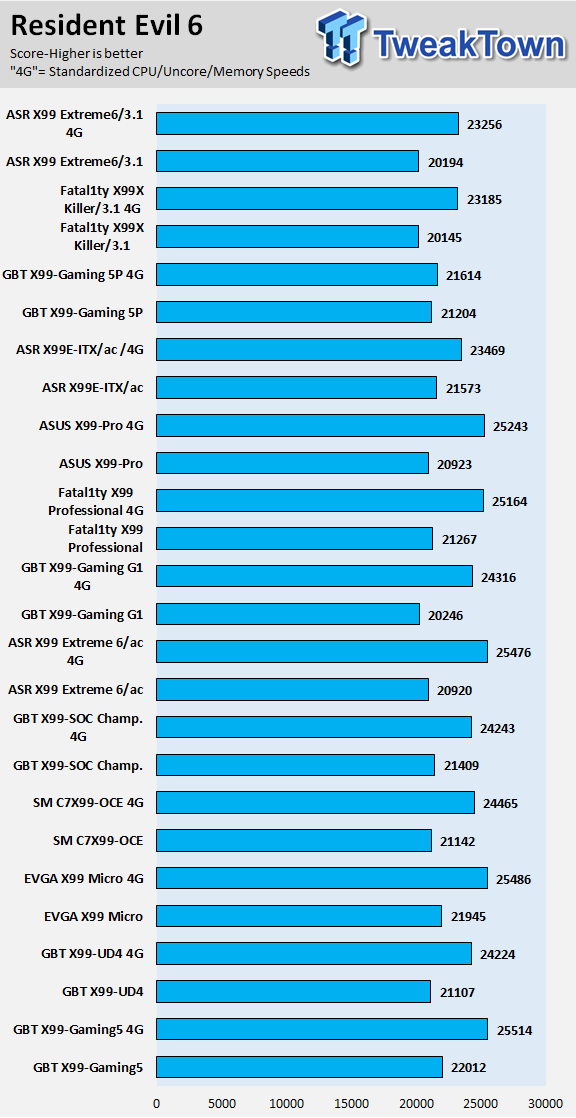
CPU, memory, system, and 3D performance are all very strong and there don't seem to be any issues.
These benchmarks are to find either exceptional performance or flaws; however, in this case the Fatal1ty X99X Killer/3.1 performs just like it should.
System IO Benchmarks
Anvil SATA6G:
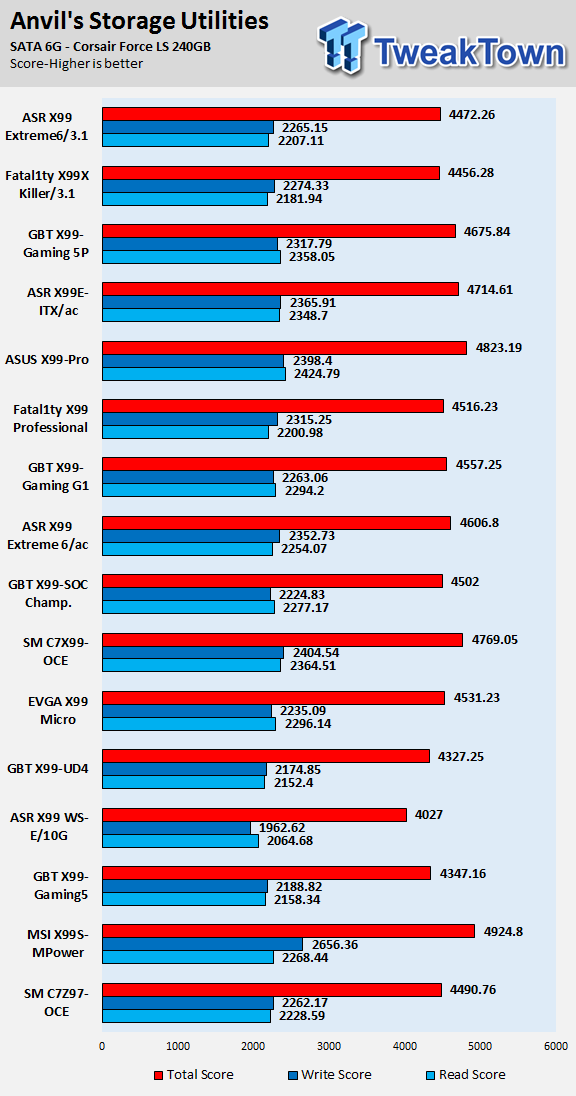
Anvil M.2:
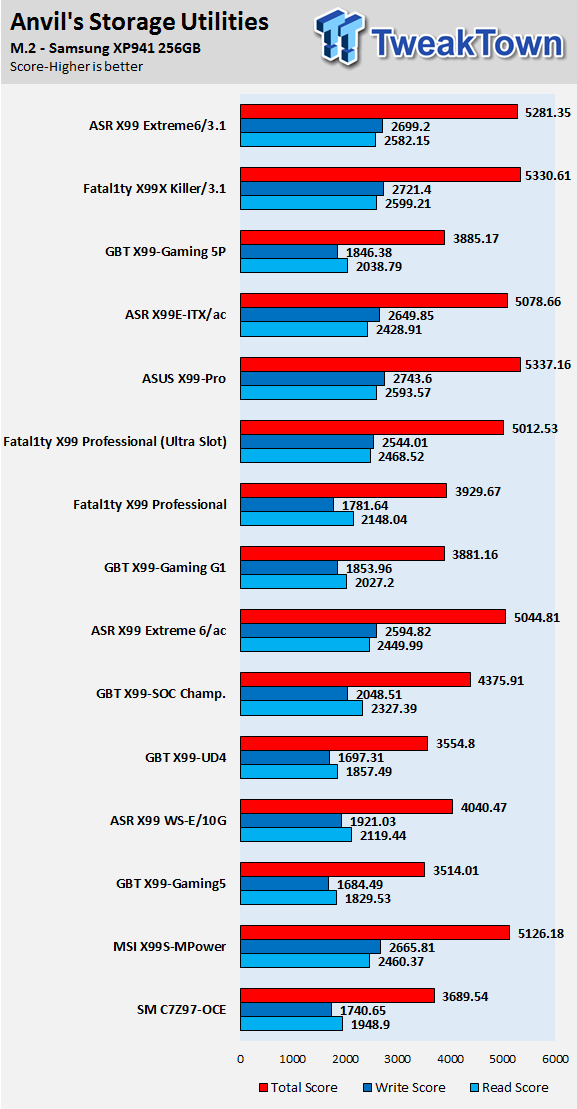
DiskBench USB 3.0:
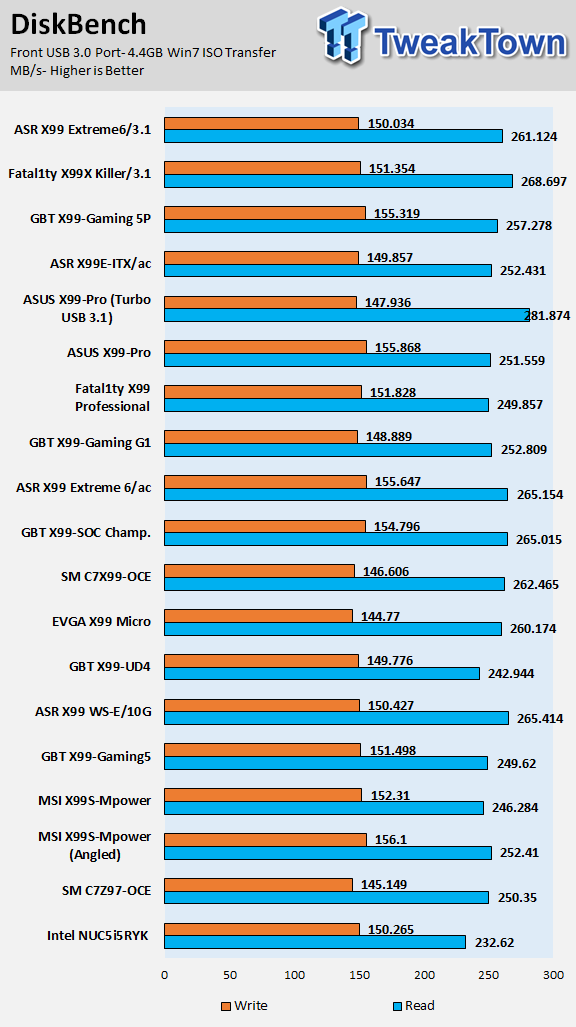
ixChariot Network Throughput:
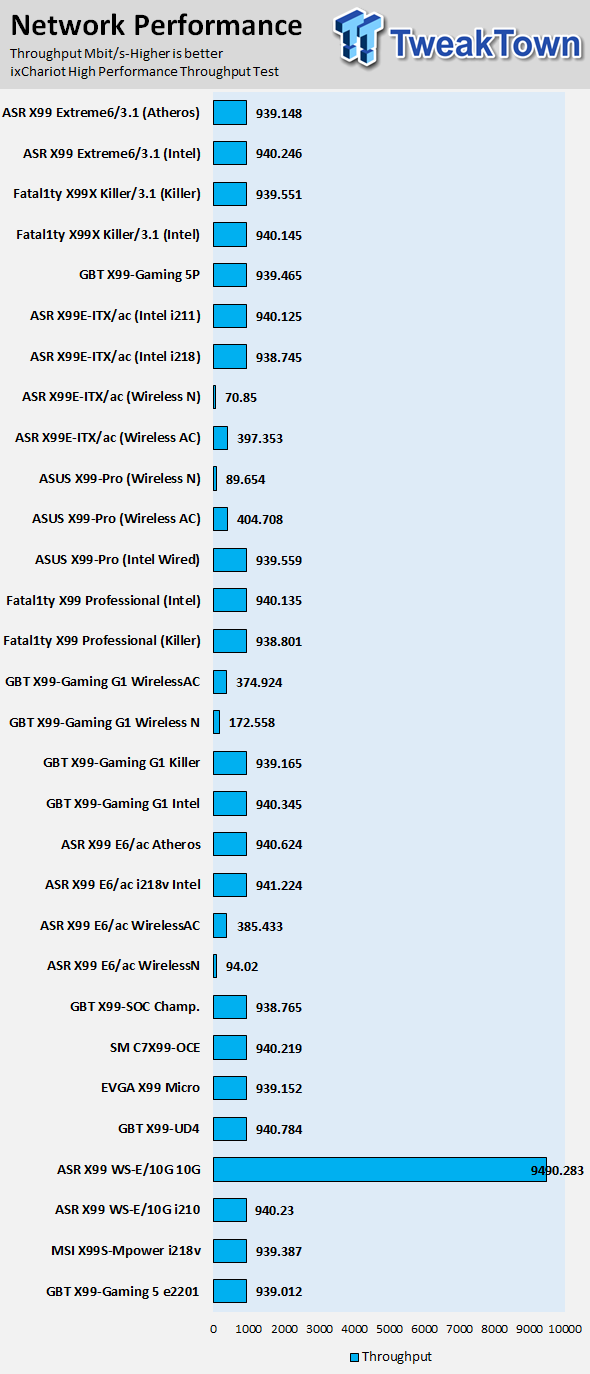
IO performance is where I expected it to be, it's an excellent board for M.2, and it seems that either ASRock has tweaked the hardware on the new board or the UEFI as its up there with our fastest M.2 boards. USB 3.0 performance is also strong, as is networking.
Audio RMAA 5.5:
I disable all audio features, set the correct bitrates, and then test the audio with a loopback test.
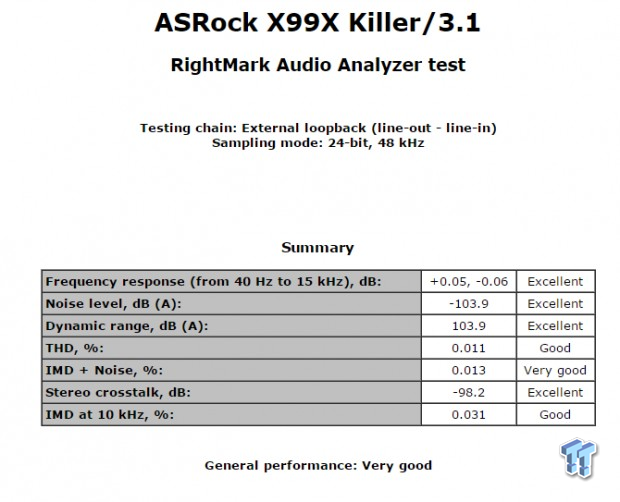
Sound Judgment by Ear: Very Good. I think that RMAA is a bit harsh on the way ASRock implements things as it sounds just as good if not better than other ALC1150 implementations but doesn't score as perfectly. There are 5 ratings for audio: 1. Problems, 2. Okay, 3. Acceptable, 4. Very good, 5. Excellent
Temperature and Power Consumption
System power usage is measured at the AC/DC PSU (the Corsair AX1200i) which I have connected to another system to measure the test system and as a backup I have a wall meter to verify. The CPU power is measured through the 8-pin connector which is hooked up to a hall effect IC which measures current and puts out a voltage in proportion to the current. That voltage is logged by a National Instruments ADC which logs the DC voltage level, which I then convert into current.

Note on Thermal Images: In the temperature section, we use our Seek thermal imaging camera to capture the surface temperatures of major components on the board; I look at the VRM and then all other things that light up the screen. If there is something to worry about then I will state it, otherwise I will just show the hotter running parts of the board for fun. Unless some component is over 80-90C then there really isn't anything to worry about.
All systems will act differently, so I will look for commonalities, such as how far from the VRM the heat spreads through the PCB and the difference in temperature between the front side and backside of the PCB. Keep in mind that the majority of the heat from the VRM goes into the PCB as it is a giant soldered on copper heat sink. A larger difference in temperature between the back and front of the PCB points towards a more effective heat sink. Anything under 60C is excellent, 60-80C is acceptable, and anything above 80C is a bit worrisome (if at stock).
Thermal Testing at Stock Speeds:
The image on the left is always at idle and the image on the right is at load.


Full frontal.
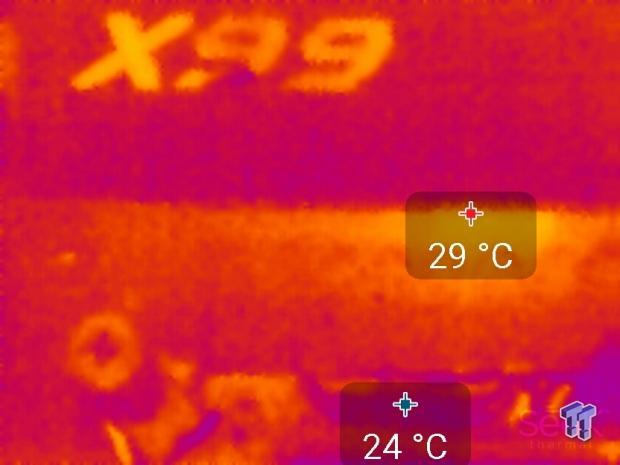
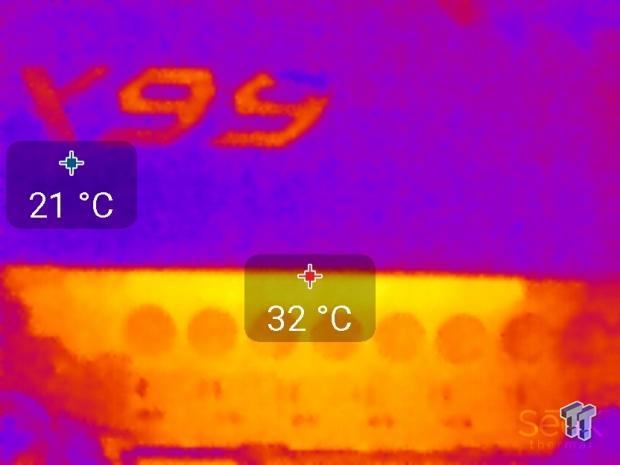
Up-close of the front of the VRM.
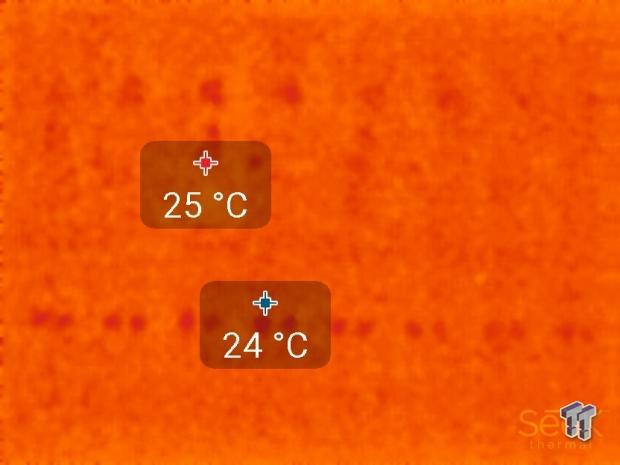
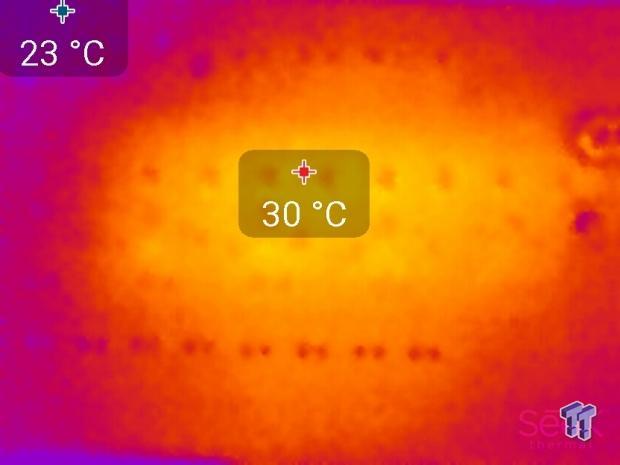
Up-close of the back of the VRM.
Thermal Testing at 4.5GHz Overclocked Speeds:
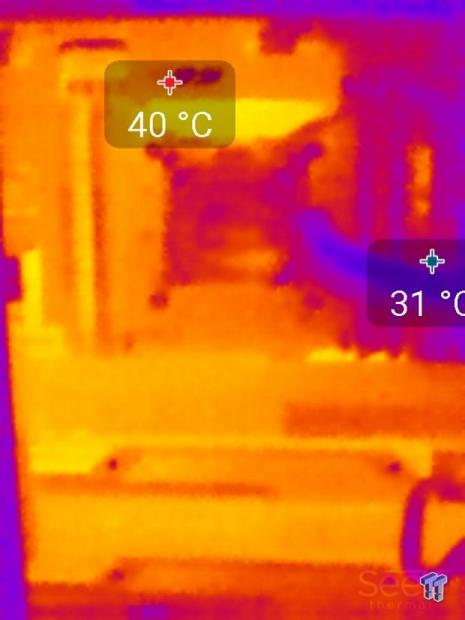

Full frontal.
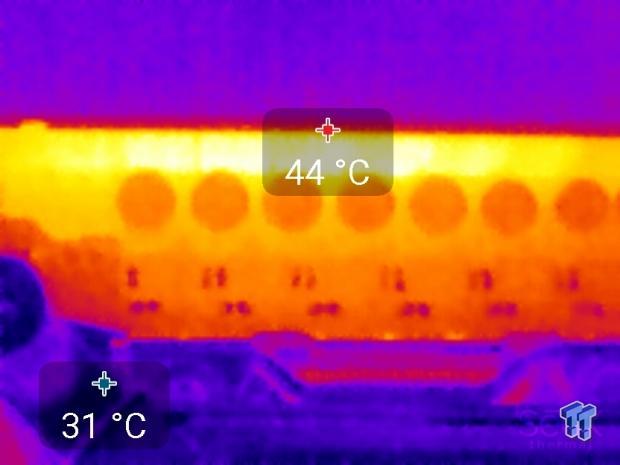

Up-close of the front of the VRM.
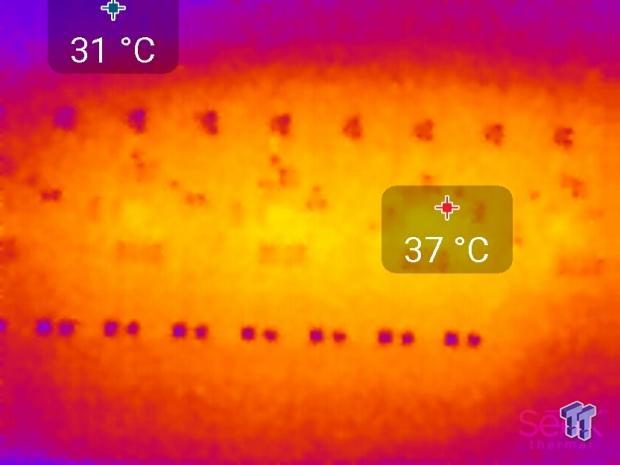

Up-close of the back of the VRM.
The Fatal1ty X99X Killer/3.1's thermal performance at idle and at load, especially at stock, is very good. The phase shedding that occurs at very high loads is clearly visible at stock operation, and even current distribution is visible in full load situations. Temperature on the back never exceeded that on the front which means the heat sinks are working, and as the conditions got worse the heat sinks drew away the heat from the PCB creating a bigger delta between front and the back, which is what I like to see.
Final Thoughts
ASRock is quick with innovations, and their latest lineup of USB 3.1 capable boards come with more than your usual chipset refresh upgrades. The Fatal1ty X99X Killer/3.1 is more prepared for overclocking than previous ASRock boards because of its new X Series OC socket which provides more pins. Many manufacturers have snuck this into their latest boards without making a huge announcement about it, and ASRock has too.
I can clock the cache very high on the X99X Killer/3.1, and it's thanks to ASRock's new socket. ASRock has also decked out the board with both types of USB 3.1 connectors, Type A and Type C. The single reversible type-C connector is built into the board, while two type-A ports come with an add-in card. The benefit to this is that you can chose how to allocate your ports. Either add in more USB 3.1 with the card, which eats up PCI-E bandwidth, or leave it out if you decide to use the bandwidth for GPUs.

I am currently unsure of the price of the Fatal1ty X99X Killer/3.1, but I can assume that it will cost a bit more than the normal X99X Killer because of the new socket and USB 3.1 capabilities. The Fatal1ty X99X Killer/3.1 proved itself through system benchmarks, IO benchmarks, and thermal imaging. Overclocking was quite easy and the UEFI is simple to use.
The support for both types of USB 3.1 devices is a huge selling point of the board, but it isn't its only benefit. If you want a solid motherboard for daily use which supports the future proof USB 3.1 standard, look no further than the Fatal1ty X99X Killer/3.1.

